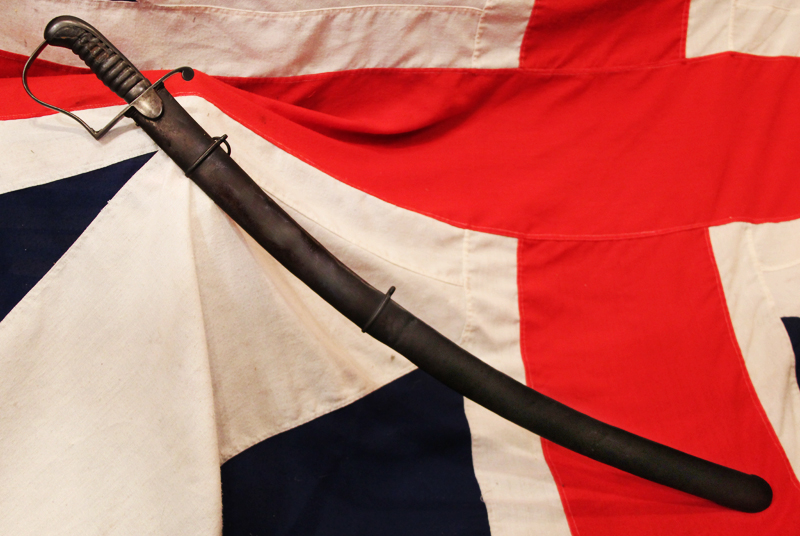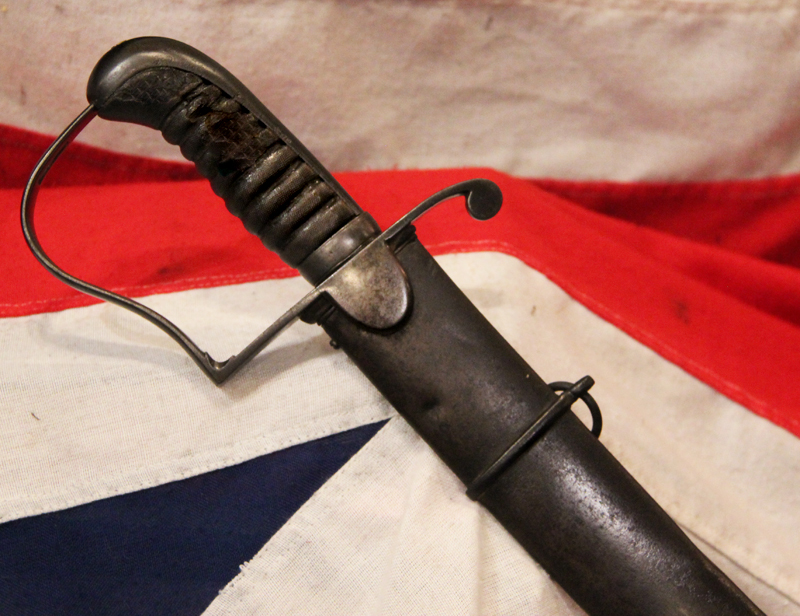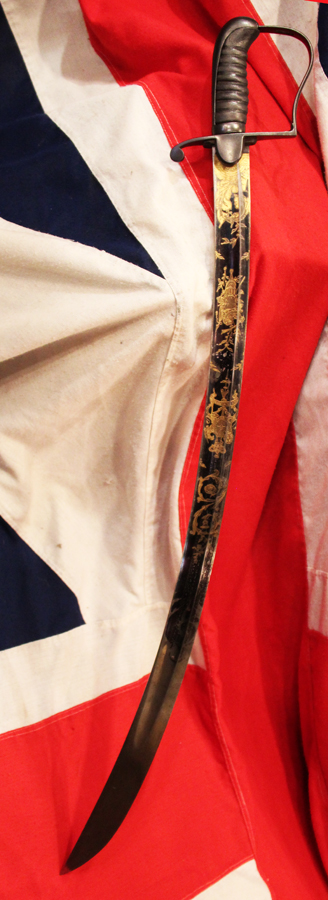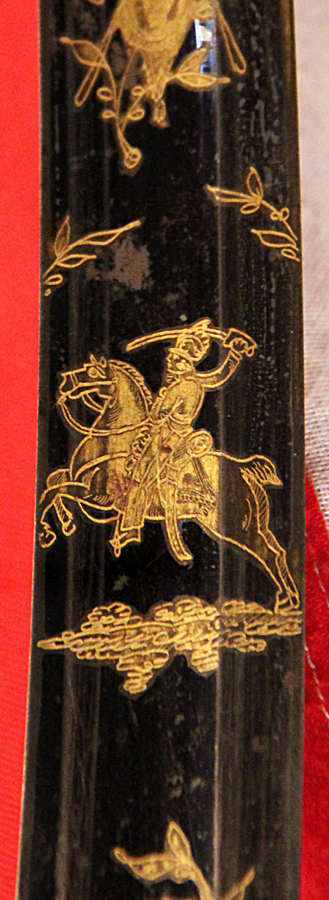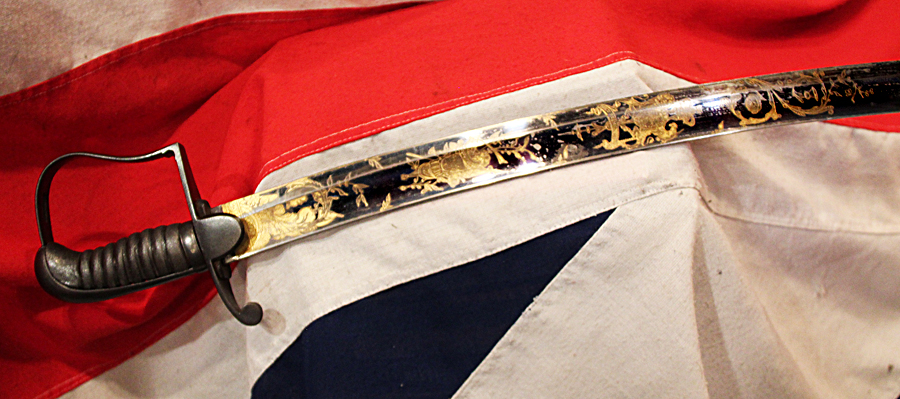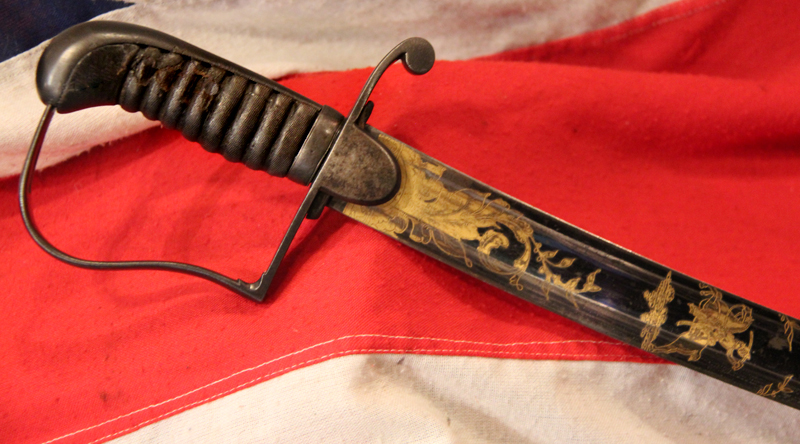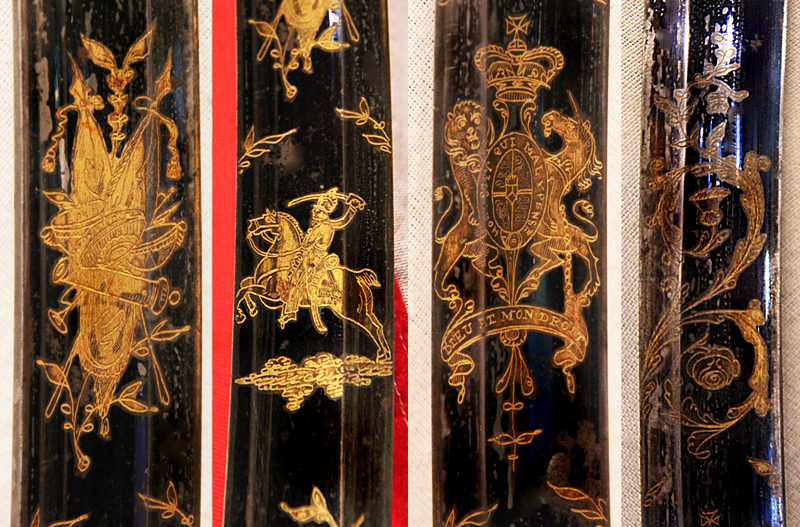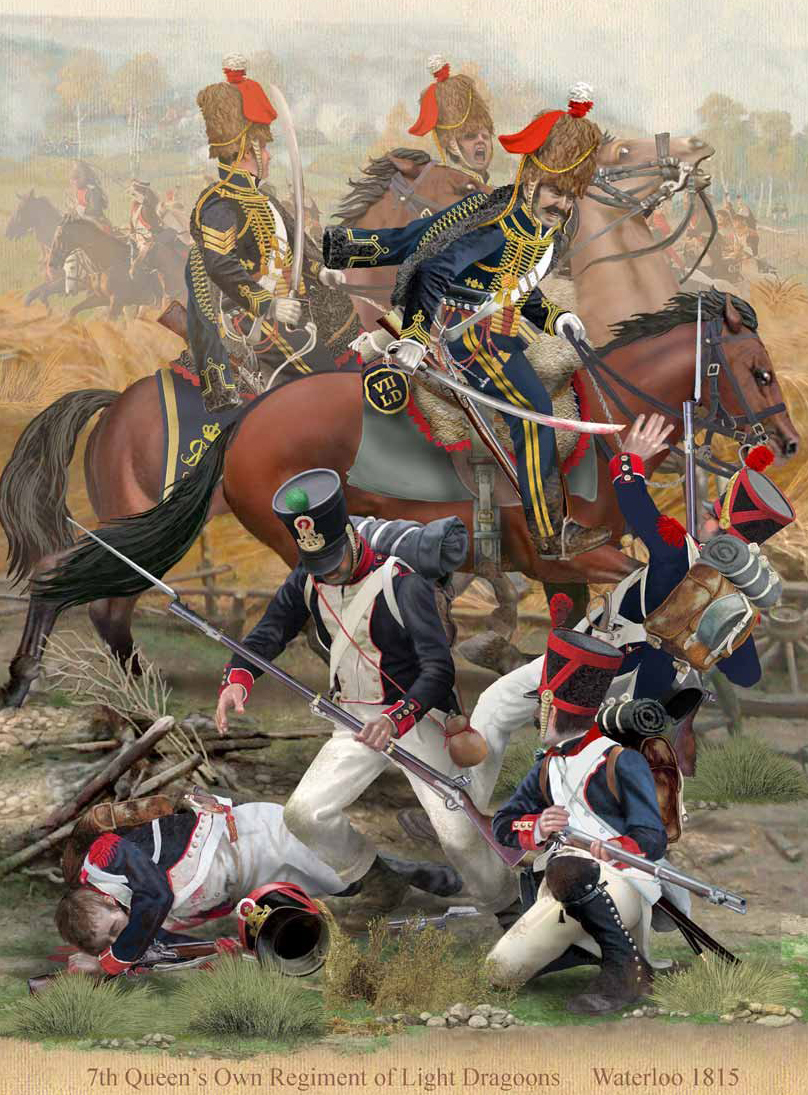A Fabulous Museum Quality 1796 'Blue and Gilt' Light Dragoon & Hussar Officer's Sabre, used By an Officer in the Peninsular War and Waterloo Period
One of the finest we have seen in a long time.
From the Napoleonic Wars, Peninsular War, Battle of Waterloo, and the War of 1812 period. Worthy of a finest museum grade collection. Stunning deluxe quality Blue and Gilt decor to the blade with engraved Royal cyphers of King George and an engraved figure of an hussar officer on horseback. An exceptional sword that would be hard to improve upon. Much of the blade bears nearly all it's original deluxe blue and gilt finish [gilt 98%, blue 90%] and it's mirror bright steel finish to the bottom section of the blade. The exterior has a superb natural patination colour to all of the steel, it has very good grip fishskin with small area worn away on one side, and close combat dents to the bottom section of scabbard, often caused by the pressure of side to side impact from horses when in battle [as the scabbards were hanging down by the horses flank]. This is truly a very finest example of the British 1796 pattern dragoon sabre, showing combat use but a great beauty of finest quality. A mighty swash buckling sabre of the British Cavalry Light Dragoon officers. An amazingly effective sword of good stout quality. British Light dragoons were first raised in the 18th century. Initially they formed part of a cavalry regiment (scouting, reconnaissance etc.), but due to their successes in this role, (and also in charging and harassing the enemy), they soon acquired a reputation for courage and skill. In 1796 a new form of sabre was designed by a brave and serving officer, Le Marchant. Le Marchant commanded the cavalry squadron during the Flanders campaign against the French (1793-94). Taking notice of comments made to him by an Austrian Officer describing British Troopers swordplay as "reminiscent of a farmer chopping wood", he designed a new light cavalry sword to improve the British cavalryman's success. It was adopted by the Army in 1797 and was used for 20 years. Le Marchant was highly praised by many for his superb design and he further developed special training and exercise regimes. King George IIIrd was especially impressed and learnt them all by heart and encouraged their use throughout the cavalry corps. For a reward Le Marchant was promoted to Lt Colonel and given command of the 7th Light Dragoons. He soon realized that the course for educating the officers in his own regiment would spread no further in the Army without suitably trained instructors. His vision was to educate officers at a central military college and train them in the art of warfare. Despite many objections and prejudices by existing powerful members of the establishment, he gained the support of the Duke of York in establishing the Royal Military College, later to become the Royal Military Academy, Sandhurst and the Army Staff College. In 1804 Le Marchant received the personal thanks of King George who said "The country is greatly indebted to you." In 1811, when nearing completion of this task, he was removed from his post as Lieutenant Governor of the College by Lord Wellington to command the heavy cavalry in the Peninsula. Appointed as Major General, he arrived in Lisbon fifteen days after leaving Portsmouth. On 22nd July 1812, Lord Wellington and the Allied Army of 48,500 men and 60 cannon were situated at Salamanca, Spain, against the French Commander Marshal Marmont. Wellington had ordered his baggage trains westwards to provide a covering force in the event of a full scale retreat, however Marmont mistakenly took the movement to be the retreat of the Army itself and ordered eight divisions of Infantry and a cavalry division westwards in an attempt to outflank the retreat. Wellington on seeing the enemy's army now spread out over four miles and therefore losing it's positional advantage, ordered the full attack. Le Marchant, at the head of one thousand British cavalry rode at a gallop towards the surprised French infantrymen, who had no time to form squares, and reduced their numbers greatly. The Heavy Brigade had received thorough training under Le Marchant and on reforming their lines charged repeatedly, until five battalions of the French left wing had been destroyed. After twenty minutes, in the final charge, Le Marchant fell from his horse having received a fatal musket shot and General Packenham who watched the attack later remarked " the fellow died sabre in hand?giving the most princely example".
Two days later, he was buried, in his military cloak, near an olive grove where he had fallen. Aged forty-six John Le Marchant was buried on the field of battle, however, a monument to him was erected in St Paul's Cathedral, London. The survival today of this sword is a testament to the now little known British hero, who, in many ways transformed the way that cavalry sword combat, and many military tactics were conducted for many decades after his valorous death. His fearsome sabre was, it is said, so feared by the French that protests were submitted to the British government stating that it was simply too gruesome for use in civilized warfare. A photo in the gallery of a Napoleonic French Hussar, who would typically have faced this very sword in dread combat
Code: 22192

